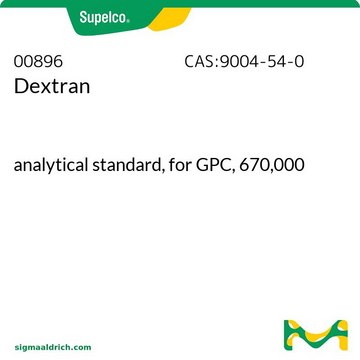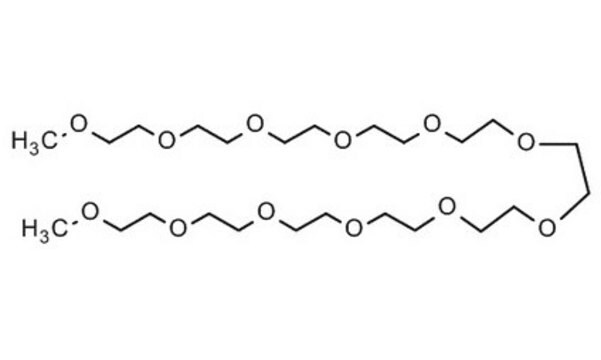8.18892
Polyethylene glycol
35000, (stabilised with 2-tert-butyl-4-methoxyphenol) for synthesis
Synonym(s):
Poly(ethylene glycol), Polyethylene glycol 35000, Polyglycol, Polyethylene oxide, Polyoxy ethylene, PEG 35000, PEG
About This Item
Recommended Products
vapor pressure
<0.01 hPa ( 20 °C)
Quality Level
form
liquid
autoignition temp.
>320 °C
potency
28000 mg/kg LD50, oral (Rat)
>20000 mg/kg LD50, skin (Rabbit)
pH
5-7 (20 °C, 100 g/L in H2O)
mp
60-65 °C
transition temp
flash point 260 °C
solubility
500 g/L
density
1.2 g/cm3 at 20 °C
bulk density
400‑500 kg/m3
storage temp.
2-30°C
SMILES string
C(CO)O
InChI
1S/C2H6O2/c3-1-2-4/h3-4H,1-2H2
InChI key
LYCAIKOWRPUZTN-UHFFFAOYSA-N
Looking for similar products? Visit Product Comparison Guide
Application
- Hierarchically structured silica monoliths for the fabrication of micro-bioreactors.
- Micro-nanostructured PEG-DA (PEG-diacrylates) hydrogels for biomedical applications.
It can also be used as:
- A template to prepare micro/mesoporous structure of silica by sol-gel process.
- A stabilizing agent in the synthesis of metal nanoparticles.
Analysis Note
Melting range (lower value): ≥ 62 °C
Melting range (upper value): ≤ 67 °C
Average molecular mass: 28000 - 38000
Identity (IR): passes test
Storage Class
10 - Combustible liquids
wgk_germany
WGK 1
flash_point_f
281.5 °F - closed cup
flash_point_c
138.6 °C - closed cup
Certificates of Analysis (COA)
Search for Certificates of Analysis (COA) by entering the products Lot/Batch Number. Lot and Batch Numbers can be found on a product’s label following the words ‘Lot’ or ‘Batch’.
Already Own This Product?
Find documentation for the products that you have recently purchased in the Document Library.
Customers Also Viewed
Our team of scientists has experience in all areas of research including Life Science, Material Science, Chemical Synthesis, Chromatography, Analytical and many others.
Contact Technical Service


